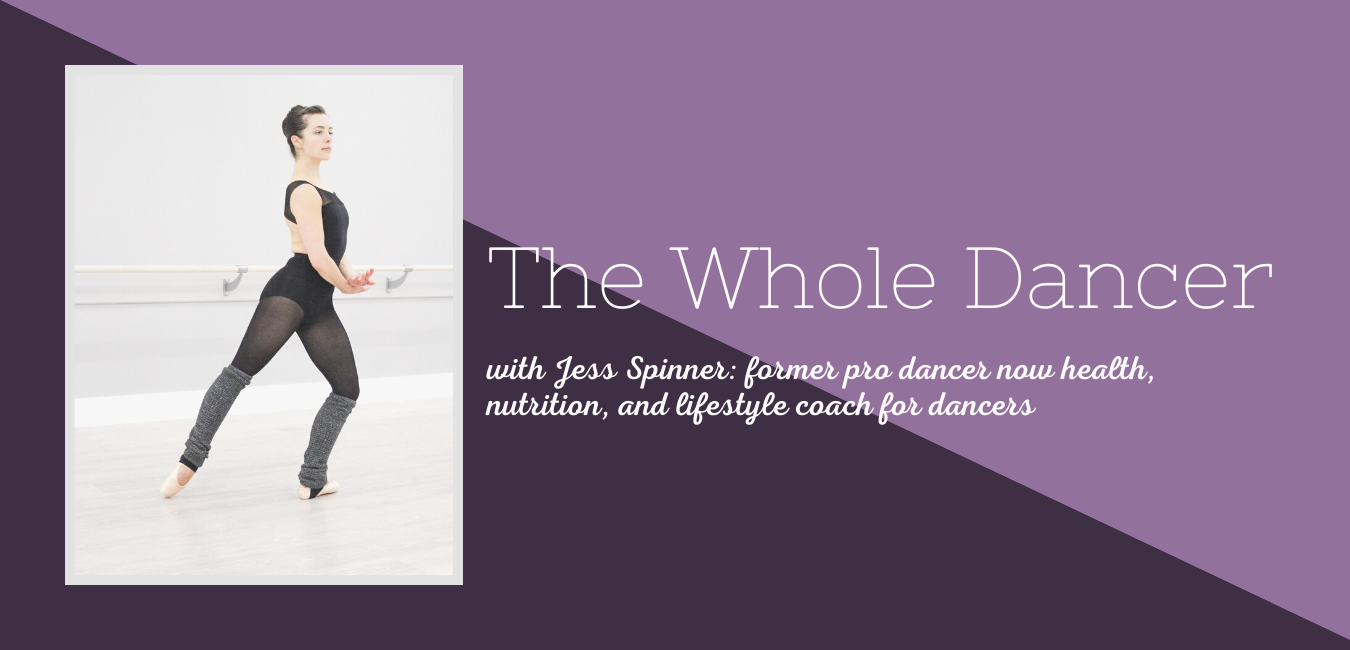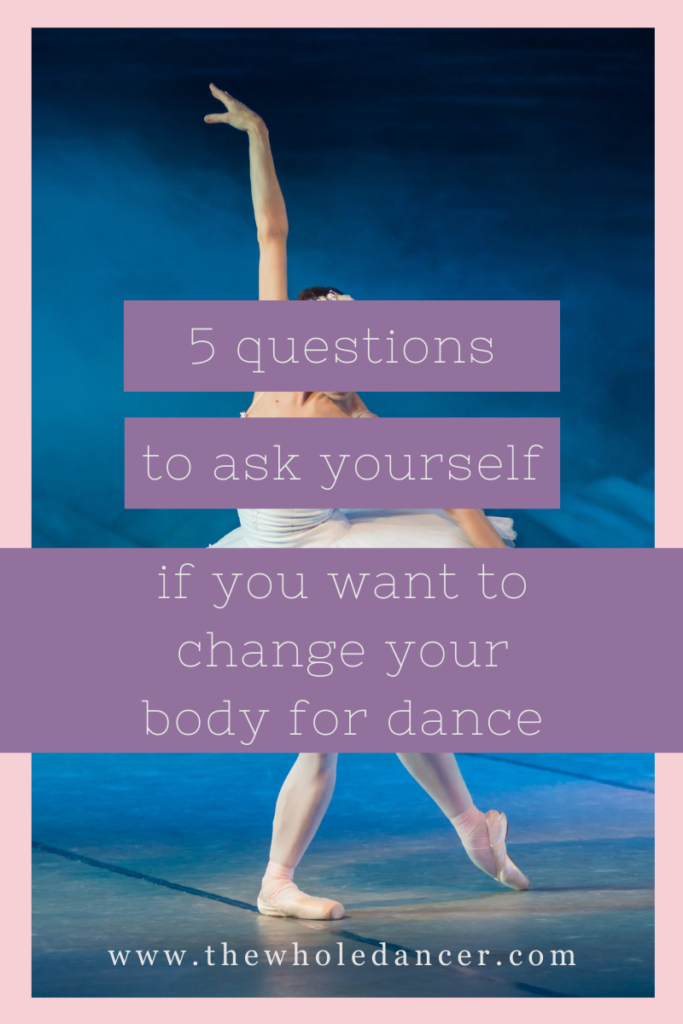In the coming days, enrollment for The Dancers’ Best Body Course + Group Coaching Program will open. This program is about achieving your personal best body in a healthy and sustainable way. For many participants, to achieve that end, they have to release the need for external validation and realize that it doesn’t matter how anyone else looks. Your body is unique to you. Your “best” body is the one that allows you to do your best dancing.
If you want to feel your best in your body, here’s the first thing you have to do…
You have to completely release any desire to change your body. This takes work — it isn’t an overnight thing. It’s essential that you accept yourself in this moment, exactly as you are, and acknowledge that it’s possible you’re already in your personal best body, you’re just not in a place of loving, accepting, and appreciating it.
In order to release the desire for external change, ask yourself the following questions:
- When did the thoughts around wanting to change my body begin?
It’s possible you started thinking something had to change at a young age. For me, it was around 13 or 14, and it became pretty all-consuming from that point on. This is common for a lot of dancers at that age.
You might have a child’s body in mind when you think about what you want to look like. Whether you’re growing into adulthood or you’re already there, your body is supposed to change over time. It’s healthy, it’s normal, and it will yield your best dancing when you allow it to happen.
Turn your concern and thinking inward.
- How do I want to feel in my dancing?
All too often, the desire for external change is connected to how you think you should look in order to dance your best. The truth is, how you look does not determine how well you dance. It doesn’t define your potential or ability to improve or succeed.
Do you want to feel strong? Happy? Joyful? How can you connect more to those feelings and approach your dancing with more intention?
Any time you’re feeling distracted by your reflection, come back to the internal feelings of the dancing. If you’re fully in your body, you’ll start to rediscover the joy regardless of what you see in the mirror.
Notice the physical sensations of your muscles engaging. Connect to your breath and as thoughts come and go, just label them as “useful” or “not useful.” This is a meditation technique that can allow for a more intentional experience in your dancing.
Release the need to please “them.”
- Who am I trying to please by changing myself?
That need and desire for external validation is pervasive in ballet and dance. This starts young and is a strong need for someone else to tell you you’re good enough.
If you think your body needs to change to achieve your goals in dance, whether you hope to get your first job, promotion, or a role, it’s time to take a step back. If you take all those goals away, how do you really feel in your body and dancing?
Consider your relationship to food and the impact it has on your body.
- How am I relating to food?
Dancers, overwhelmingly, are undernourished, but it’s so normalized that you assume that’s how you’re supposed to eat to make it in dance. If you have ever attached a calorie count to your daily food consumption, it’s very likely you’re not eating enough to power your dancing and support your health.
It might be time to start intentionally adding food to your daily meal plan. If you have any fear around this, start small and focus on macros you might have previously avoided.
The goal should be to feel confident and low-stress choosing the foods that will help you to feel and perform your best in a given moment. Give yourself permission to provide nourishment for your body. And give yourself permission to enjoy the tastes, textures, and experiences of your food.
- How long have you been struggling with thinking your body was wrong or needed to change?
Honestly, any amount of time feeling stuck in that head game is more than enough. It lasted nearly 15 years for me — that’s a big chunk of my life spent obsessing over food, hating my body, and feeling helpless, confused, and alone as I struggled to figure it all out. I’ve worked with retired dancers who were in the struggle even longer.
Decide you’re done with the struggle. Your body is not the problem and you don’t have to change your body for dance. Once you have the resolve, take action. Explore your support options and get in touch with the people who understand what you’re going through, who can help you move forward and take action.
Depending on your needs and support preferences, The Dancers’ Best Body Course and Group Coaching Program could provide the shift you need to move through your challenges with food and your body. For experiences of dancers, just like you, who have participated in past rounds of the program, read the testimonials page. By reading their words, you’ll see that this program is decidedly not about any major change in your body for dance. It’s about finding your confidence and power in your body for dance.
If your needs are outside of the scope of support I offer or what’s provided within the program, I’ll tell you honestly and can refer you to other practitioners who guide dancers through these challenges.
Not sure if this is right for you? Send me an email and share your story: jess@thewholedancer.com


Pingback:5 Simple Steps for an Intentional New Year in Dance - The Whole Dancer
Pingback:Can Dancers Safely Set Weight Loss Goals? - The Whole Dancer